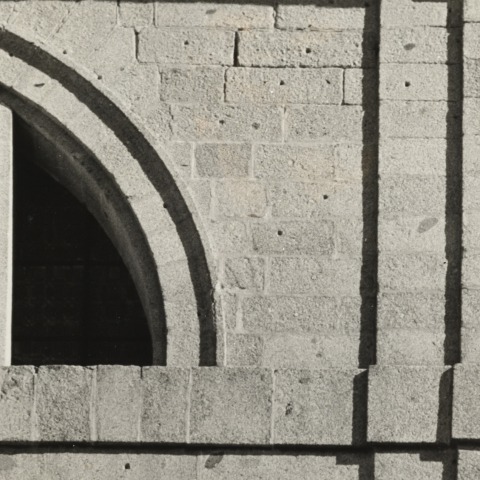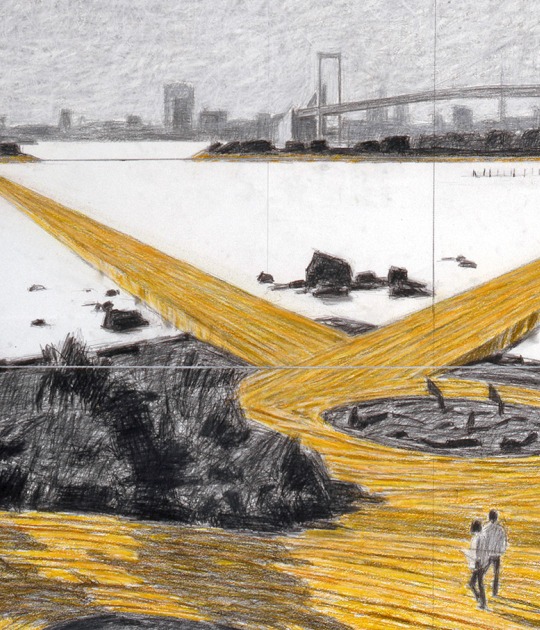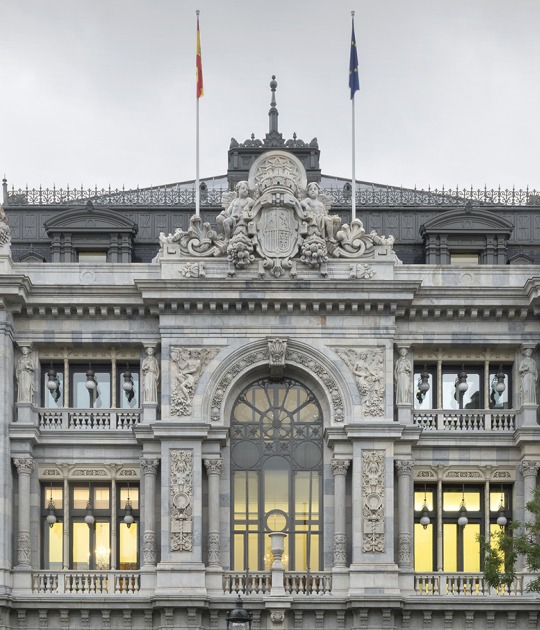Since Lucien Hervé (Hódmezovásárhely, Hungary, 1910 - Paris, 2007) carried out in 1949 a report of the Unité d'Habitation de Marseille designed by the great modernist master Le Corbusier, the visual and plastic symbiosis between the architect’s abstract architecture and the poetic way of portraying it by the photographer formed a selective language that earned him - after 15 years of exclusive collaboration - the highest disciplinary recognition in the field of both architecture and photography of the twentieth century.
Beyond this work of professional nature, Hervé was fundamentally an artist endowed with an enormous sensitivity and visual rigor. Possessing an intense biography and a strong personality, Hervé's photographs - in tune with those of his compatriots Kertész, Brasaa or Capa - transcend the visual and carry reflections of great conceptual depth.
In the years of his highest recognition, Hervé received through the mediation of Jesús de la Sota -brother of architect Alejandro de la Sota- the commission to publish a photobook for RM publishing house in Barcelona, directed by Ramon Julià and painter Lluís Marsans. In 1959 Hervé made a first trip to Spain in order to photograph the monastery of El Escorial -object of the original order- and undertook a long trip along the Spanish Mediterranean coast to photograph the popular architecture, object of the second commission for the same publisher.
Due to diverse and uncertain circumstances, the books never got published. However, Hervé adopted these latent projects as his personal flagship work, using them until the end of his life to explore systems and narrative processes supported by a rigorous historical and conceptual investigation and not exempt -especially in the case of El Escorial- from a remarkable critical background.
The exhibition in the José de la Mano Gallery presents, for the first time, a representative sample of these two unpublished photographic projects that he himself called "white Spain" and "black Spain". Hervé toured the Mediterranean coast in search of that white Spain that outlined the shapes and shadows in its whitewashed walls in relation to the landscape and, on the other hand, scrutinized the black shadows of the once splendid Renaissance monument in search of a way to unmask, at the stroke of light, its classic geometries sculpted in granite.
Being independent projects, in the eyes of Hervé they formed a unitary visual narrative that, from their particular identity, ended up portraying a pulse between the amiable and simple splendor of that anonymous architecture and the icy monumentality of a solemn imperial architecture.
The exhibition of a select number of vintage copies of both series aims to give them visibility to underpin their significance not only in the revaluation of Lucien Hervé's critical fortune, but also as a paradigm of a different photographic view of the archetypal imaginary of post-war Spain.
The photographic exhibition -accompanied by some complementary elements such as notebooks, contact sheets, books, etc.- presents a different and unique foreign review of the visual archetypes of post-war monumental and vernacular Spain and values the artistic, critical scope and conceptual of an extraordinary photographic language that uses light as a calligraphy of the visual and evidencing the shapes of the constructed.
Beyond this work of professional nature, Hervé was fundamentally an artist endowed with an enormous sensitivity and visual rigor. Possessing an intense biography and a strong personality, Hervé's photographs - in tune with those of his compatriots Kertész, Brasaa or Capa - transcend the visual and carry reflections of great conceptual depth.
In the years of his highest recognition, Hervé received through the mediation of Jesús de la Sota -brother of architect Alejandro de la Sota- the commission to publish a photobook for RM publishing house in Barcelona, directed by Ramon Julià and painter Lluís Marsans. In 1959 Hervé made a first trip to Spain in order to photograph the monastery of El Escorial -object of the original order- and undertook a long trip along the Spanish Mediterranean coast to photograph the popular architecture, object of the second commission for the same publisher.
Due to diverse and uncertain circumstances, the books never got published. However, Hervé adopted these latent projects as his personal flagship work, using them until the end of his life to explore systems and narrative processes supported by a rigorous historical and conceptual investigation and not exempt -especially in the case of El Escorial- from a remarkable critical background.
The exhibition in the José de la Mano Gallery presents, for the first time, a representative sample of these two unpublished photographic projects that he himself called "white Spain" and "black Spain". Hervé toured the Mediterranean coast in search of that white Spain that outlined the shapes and shadows in its whitewashed walls in relation to the landscape and, on the other hand, scrutinized the black shadows of the once splendid Renaissance monument in search of a way to unmask, at the stroke of light, its classic geometries sculpted in granite.
Being independent projects, in the eyes of Hervé they formed a unitary visual narrative that, from their particular identity, ended up portraying a pulse between the amiable and simple splendor of that anonymous architecture and the icy monumentality of a solemn imperial architecture.
The exhibition of a select number of vintage copies of both series aims to give them visibility to underpin their significance not only in the revaluation of Lucien Hervé's critical fortune, but also as a paradigm of a different photographic view of the archetypal imaginary of post-war Spain.
The photographic exhibition -accompanied by some complementary elements such as notebooks, contact sheets, books, etc.- presents a different and unique foreign review of the visual archetypes of post-war monumental and vernacular Spain and values the artistic, critical scope and conceptual of an extraordinary photographic language that uses light as a calligraphy of the visual and evidencing the shapes of the constructed.



























